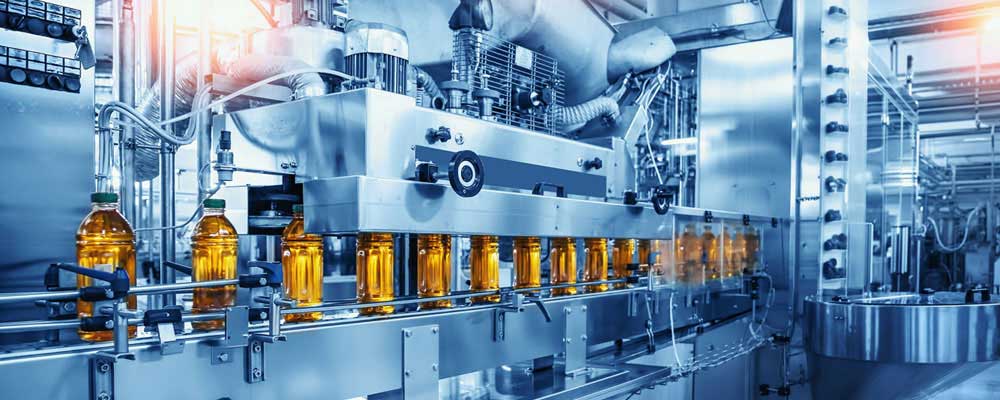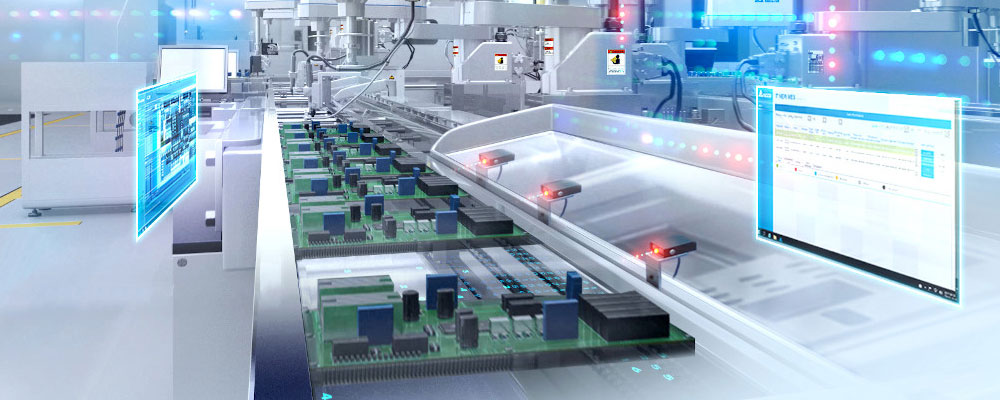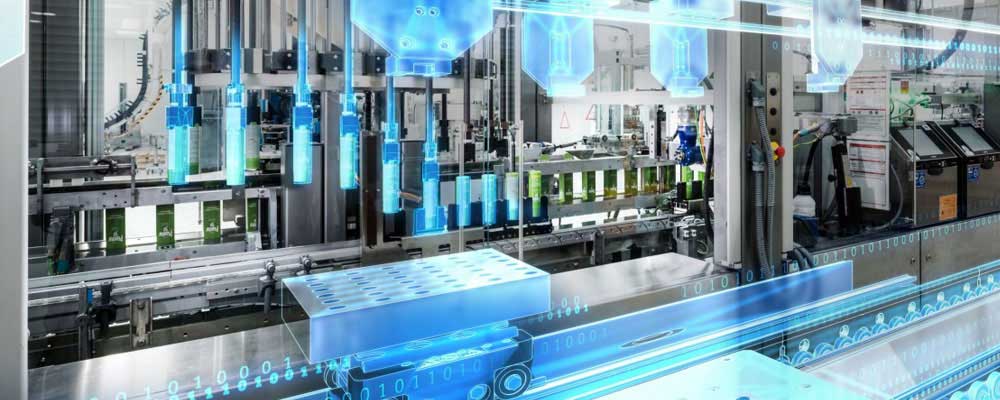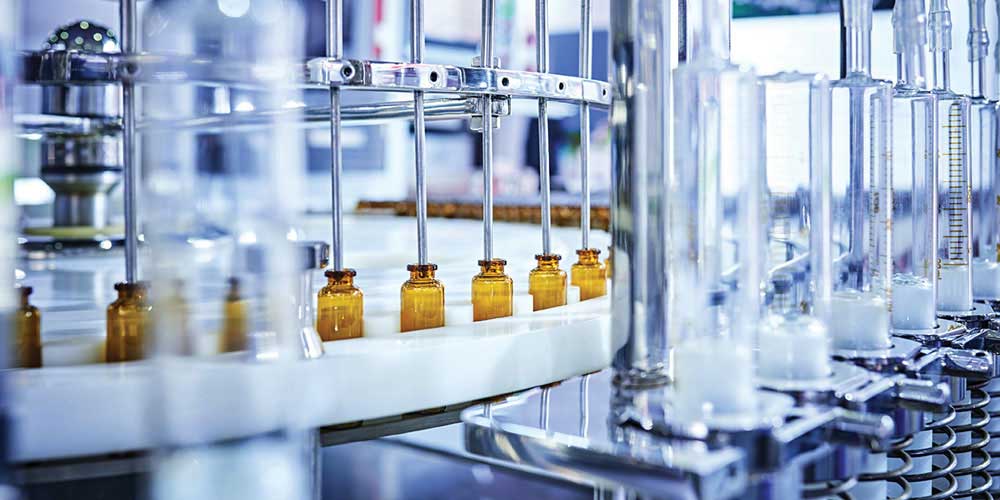
Industrial Automation Overview: Unleashing the Power of Automation
In the world of manufacturing and production, the concept of industrial automation has become increasingly important over the years. The integration of technology and automation has revolutionized the way in which industries operate, leading to greater efficiency, productivity, and profitability.
Industrial automation refers to the use of technology and control systems to operate and monitor various industrial processes. This includes the use of sensors, controllers, and software to automate tasks and reduce the need for human intervention.
The purpose of this blog post is to provide readers with an overview of industrial automation, including its definition, importance, and how it has transformed modern industries. Whether you are an industry professional or simply interested in learning more about the impact of automation on the manufacturing world, this blog post will provide you with valuable insights into this important topic.
Importance of Industrial Automation in Modern Industries
Industrial automation has become increasingly important in modern industries due to its ability to enhance efficiency, productivity, and safety. With the use of automation, industries are able to streamline their operations, reduce costs, and improve the overall quality of their products.

The History of Industrial Automation
Industrial automation has completely transformed the manufacturing industry. It has revolutionized the way goods are produced and has had a significant impact on efficiency, productivity, and quality control.
One of the most significant changes brought about by industrial automation is the increase in the speed and efficiency of manufacturing processes.
Early Inventions and Innovations
The concept of industrial automation dates back to the early days of the Industrial Revolution. As early as the 18th century, inventors were experimenting with ways to automate various manufacturing processes. Some of the most notable early inventions and innovations in industrial automation include:
Jacquard Loom
The Jacquard loom, invented in 1804 by Joseph Marie Jacquard, was a weaving machine that used punched cards to control the weaving process. This technology paved the way for the development of computer-controlled machinery.
Assembly Line
The assembly line, introduced by Ransom Olds in 1901, revolutionized the way in which goods were manufactured. By breaking down the manufacturing process into smaller, specialized tasks, workers were able to produce goods much more quickly and efficiently.
Numerical Control Machines
Numerical control machines, first developed in the 1950s, allowed for the automated control of machine tools using punched cards or magnetic tapes. This technology paved the way for the development of computer-aided manufacturing.
Evolution of Industrial Automation
Over the years, industrial automation has undergone several waves of evolution, each marked by significant advancements in technology. These waves include:
First Wave: Mechanization
The first wave of industrial automation, known as mechanization, began in the late 18th century and continued through the mid-19th century. This wave was characterized by the development of machines that could perform specific tasks, such as the spinning jenny and power loom.
Second Wave: Electrification
The second wave of industrial automation, known as electrification, began in the late 19th century and continued through the mid-20th century. This wave was characterized by the widespread adoption of electric power and the development of new machines, such as the electric motor.
Third Wave: Computerization
The third wave of industrial automation, known as computerization, began in the mid-20th century and continues to this day. This wave was marked by the development of computer technology and the use of computers to control manufacturing processes. This included the development of computer-aided design and computer-aided manufacturing.
Fourth Wave: Industry 4.0
The fourth wave of industrial automation, known as Industry 4.0, is currently underway. This wave is characterized by the integration of cyber-physical systems, the Internet of Things, and cloud computing into manufacturing processes. This includes the use of sensors, artificial intelligence, and machine learning to optimize manufacturing processes and improve efficiency.
What Has Industrial Automation Changed?
Industrial automation has changed many aspects of manufacturing and production, including:
Efficiency: With the use of automation, manufacturers are able to produce goods more quickly and efficiently.
Quality: Automation ensures consistency in the manufacturing process, leading to higher-quality products.
Safety: Automated processes are often safer for workers, as they reduce the need for human intervention in hazardous situations.
Cost: The use of automation can reduce labor costs and increase productivity, leading to cost savings for manufacturers.

Levels of Industrial Automation Process
The Five Levels of the Industrial Automation Process
Industrial automation has come a long way since its inception and has revolutionized the way in which goods are produced. In today’s manufacturing world, there are five levels of Factory automation process that are used to define the extent of automation in a particular system. Let’s take a look at each of these levels in turn.
Manual Production
Production is entirely manual. Workers perform all tasks, including the handling of raw materials, the operation of machines, and the inspection of finished products. This level of automation is inefficient and can be prone to errors, but it is still used in some industries where automation is not feasible or cost-effective.
Basic Automation
Basic automation is introduced. This includes the use of simple machines, such as conveyor belts and assembly lines, to automate certain tasks. Human intervention is still required, but automation helps to improve efficiency and reduce errors.
Supervisory Control
Supervisory control is introduced. This includes the use of programmable logic controllers (PLCs) to automate more complex tasks, such as the control of temperature and pressure in a manufacturing process. Operators are still required to monitor and make decisions, but the system is more automated than at Level 1.
Advanced Supervisory Control
Advanced supervisory control is introduced. This includes the use of distributed control systems (DCS) to automate more complex tasks, such as the control of multiple machines in a manufacturing process. The system is highly automated, with operators required to monitor and intervene only when necessary.
Integrated Automation
Integrated automation is introduced. This includes the use of advanced technologies, such as artificial intelligence and machine learning, to automate and optimize entire manufacturing processes. The system is fully automated, with little human intervention required.
The levels of the industrial automation process provide a useful framework for understanding the extent of automation in a particular system. From manual production to integrated automation, each level represents a step forward in efficiency, productivity, and quality control. As automation technologies continue to evolve, we can expect to see more systems moving towards higher levels of automation, and further transforming the manufacturing landscape.
Types of Industrial Automation Systems
Industrial automation has become an essential part of modern manufacturing processes, and it has helped industries to improve efficiency, reduce costs, and increase productivity. There are four types of Factory automation systems used today: Fixed Automation (Hard Automation), Programmable Automation, Flexible Automation (Soft Automation), and Integrated Automation. In this article, we will discuss each type of automation system and the industrial control systems, motion control systems, and automated manufacturing systems associated with them.
Fixed Automation (Hard Automation)
Fixed automation, also known as hard automation, is a type of automation system designed to perform a specific task or set of tasks. These systems are typically used in mass production and are not easily adaptable to changes in production requirements.
Industrial control systems are a key component of fixed automation systems. These systems include sensors, controllers, and actuators that work together to control the manufacturing process. Motion control systems, such as hydraulic or pneumatic systems, are also used in fixed automation systems to control the movement of machines and parts.
Programmable Automation
Programmable automation is a type of automation system that can be programmed to perform different tasks, making it more flexible than fixed automation. These systems are commonly used in batch production and can be reprogrammed to accommodate changes in production requirements.
Programmable logic controllers (PLCs) are a type of industrial control system used in programmable automation. These controllers can be programmed to control different parts of the manufacturing process. Automated manufacturing systems, such as assembly lines and conveyors, are also used in programmable automation to move parts and products through the manufacturing process.
Flexible Automation (Soft Automation)
Flexible automation, also known as soft automation, is a type of automation system that uses robotic technology to perform a wide range of tasks. These systems are highly adaptable and can be programmed to perform different tasks based on production requirements.
Industrial robots are a key component of flexible automation systems. These robots use sensors and controllers to perform tasks such as welding, painting, and assembly. Motion control systems are also used in flexible automation to control the movement of robots and parts.
Integrated Automation
Integrated automation is a type of automation system that integrates different types of automation systems into a single system. This allows for greater flexibility and control over the manufacturing process.
Integrated automation systems use a combination of industrial control systems, motion control systems, and automated manufacturing systems to perform tasks. These systems can be reprogrammed and reconfigured to adapt to changes in production requirements.
Industrial automation systems have come a long way over the years, and each type of automation system offers unique advantages to manufacturers. From fixed automation to integrated automation, industrial control systems, motion control systems, and automated manufacturing systems are used to perform different tasks and meet various production requirements. As automation technologies continue to evolve, we can expect to see more sophisticated automation systems that offer even greater levels of efficiency, flexibility, and productivity.

Key Components of Industrial Automation
Industrial automation has revolutionized the way manufacturing processes are carried out, improving efficiency, reducing costs, and increasing productivity. In this article, we’ll take a look at the key components of industrial automation, including sensors and actuators, controllers, human-machine interfaces (HMIs), robotics, and industrial communication networks.
Sensors and Actuators
Sensors and actuators are key components of industrial automation systems. Sensors detect changes in the environment and send signals to the controller, while actuators respond to signals from the controller to produce physical changes in the environment.
Examples of sensors used in industrial automation include Proximity Sensors, Photoelectric Sensors, Fiber Optic Sensors, Ultrasonic Sensors, Distance Sensors, Label Sensors, Rotary Encoders, temperature sensors, pressure sensors, and other special sensors. Actuators, such as Solenoids, Hydraulic actuators, Pneumatic actuators, Mechanical actuators, Electrical actuators, Magnetic actuators, Electrochemical actuators, and other physical parameters.
Controllers
Controllers are the brains of industrial automation systems, responsible for controlling and coordinating the actions of sensors, actuators, and other components. Programmable logic controllers (PLCs) and distributed control systems (DCS) are commonly used controllers in industrial automation.
PLCs are designed for real-time control of industrial processes and can be programmed to control specific actions based on sensor inputs. DCSs are used for more complex systems and can coordinate the actions of multiple PLCs.
Human-Machine Interfaces (HMIs)
HMIs are the interface between humans and machines in industrial automation systems. They allow operators to monitor and control the system through graphical interfaces, touchscreens, or other interactive devices.
HMIs provide real-time feedback on the status of the system and allow operators to adjust settings and parameters as needed. They can also be used to generate reports and provide insights into system performance.
Robotics
Robotics has become an essential component of industrial automation systems, allowing for the automation of tasks that are too dangerous or difficult for humans to perform. Industrial robots are used for tasks such as welding, painting, and assembly.
Robots use sensors, controllers, and actuators to perform tasks, and can be programmed to perform specific actions based on sensor inputs. They can also be integrated with other components of industrial automation systems, such as HMIs and industrial communication networks.
Industrial Communication Networks
Industrial communication networks are used to connect components of industrial automation systems, allowing for real-time communication and coordination between sensors, controllers, and other components. These networks can be wired or wireless and are used to transmit data and signals between components.
Industrial communication networks include Ethernet, Fieldbus, and wireless communication protocols. They are essential for ensuring that components of industrial automation systems are working together efficiently and effectively.
Industrial automation components are essential for improving the efficiency and productivity of manufacturing processes. Sensors and actuators, controllers, HMIs, robotics, and industrial communication networks are just a few of the components that make up industrial automation systems. As automation technologies continue to evolve, we can expect to see more sophisticated components and systems that offer even greater levels of efficiency and productivity.
Real-World Applications of Industrial Automation
Industrial automation has revolutionized the way manufacturing processes are carried out, and it has found its way into various industries. In this article, we’ll take a look at real-world applications of industrial automation across different industries, including the automotive industry, electronics manufacturing, food, and beverage processing, pharmaceutical industry, and oil and gas industry.
Automotive Industry
The automotive industry is a major user of industrial automation, with automated systems used in various stages of the manufacturing process. Robots are used for welding, painting, and assembly, while conveyors and other automated systems are used for material handling and transportation.
Automated inspection systems are also used to ensure the quality of finished products. These systems use sensors and other technologies to detect defects and other issues in the manufacturing process.
Electronics Manufacturing
The electronics manufacturing industry is another major user of industrial automation. Automated systems are used for assembling and testing electronic components and devices.
Robotic systems are used for pick and place operations, while automated inspection systems are used to detect defects and other issues in the manufacturing process.
Food and Beverage Processing
The food and beverage processing industry has also embraced industrial automation, with automated systems used for the processing, packaging, and labeling of food products.
Automated systems are used for ingredient handling, mixing, and cooking, while robotic systems are used for pick-and-place operations. Automated inspection systems are also used to detect defects and other issues in the manufacturing process.
Pharmaceutical Industry
The pharmaceutical industry has a high degree of regulation and quality control, making it an ideal candidate for industrial automation. Automated systems are used for the manufacturing and packaging of pharmaceutical products.
Robotic systems are used for pick and place operations, while automated inspection systems are used to ensure the quality of finished products. Automated storage and retrieval systems are also used to manage inventory and reduce errors.
Oil and Gas Industry
The oil and gas industry is a complex and dangerous industry, making it an ideal candidate for industrial automation. Automated systems are used for exploration, drilling, and extraction operations.
Robotic systems are used for inspection and maintenance tasks, while automated monitoring systems are used to detect and respond to equipment failures and other issues. Automated systems are also used for the transportation and storage of oil and gas products.
Industrial automation has found its way into various industries, and it has revolutionized the way manufacturing processes are carried out. From the automotive industry to the oil and gas industry, industrial automation is used to improve efficiency, reduce costs, and increase productivity. As automation technologies continue to evolve, we can expect to see more sophisticated systems and applications in various industries, leading to even greater levels of efficiency and productivity.

Conclusion
Industrial automation has been a transformative force in manufacturing and production, revolutionizing the way goods are made and distributed. From the early inventions of the Jacquard loom and assembly line to the latest technologies of Industry 4.0, industrial automation has undergone several waves of evolution, each marked by significant advancements in technology. The levels of the industrial automation process provide a useful framework for understanding the extent of automation in a particular system, from manual production to integrated automation.
The key components of industrial automation, including sensors and actuators, controllers, hmi human-machine interfaces, robotics, and industrial communication networks, work together to improve the efficiency and productivity of manufacturing processes. These components find real-world applications in various industries, including the automotive industry, electronics manufacturing, food, and beverage processing, pharmaceutical industry, and oil and gas industry.
As automation technologies continue to evolve, we can expect to see more sophisticated systems and applications in various industries, leading to even greater levels of efficiency and productivity. Industrial automation will continue to transform the manufacturing landscape, and it will remain an essential part of modern production and manufacturing processes.
